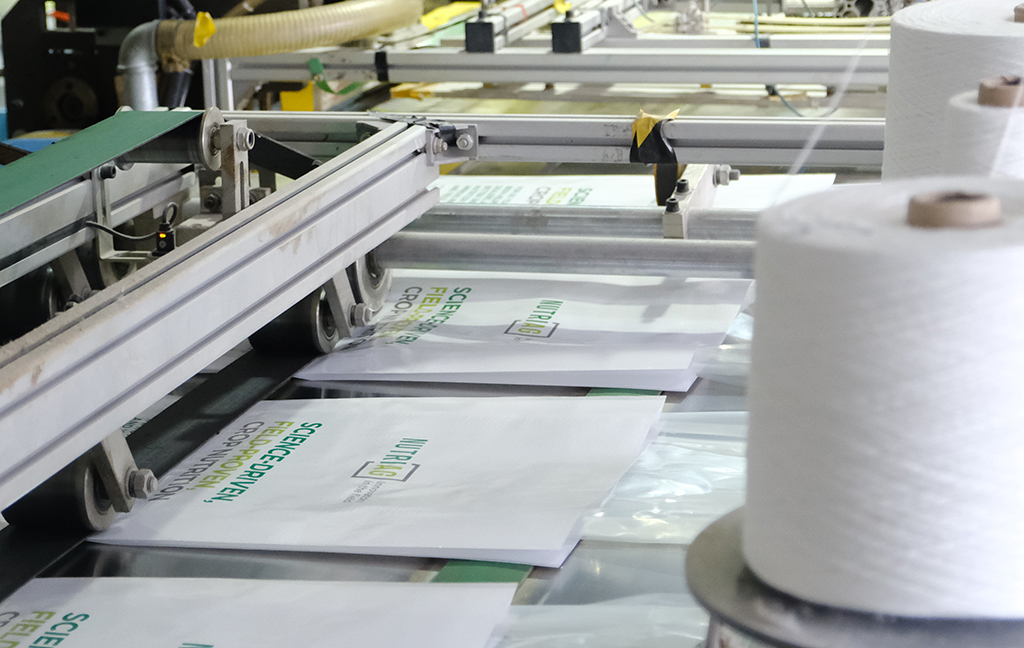
Add a header to begin generating the table of contents
H1: Introduction
“The future of packaging isn’t just about functionality—it’s about responsibility. By integrating rigorous raw material quality control, advanced manufacturing technologies, and ESG-aligned practices, VidePak’s laminated woven bags set a new benchmark for sustainable innovation, ensuring compliance with global standards while driving operational efficiency.” — Ray, CEO of VidePak.
As global demand for sustainable packaging grows at a CAGR of 6.2% (2023–2030), laminated woven bags are emerging as a critical solution for industries ranging from agriculture to retail. VidePak, a global leader in woven bag manufacturing since 2008, leverages Austrian Starlinger machinery and strategic partnerships with premium raw material suppliers to produce laminated bags that excel in durability, recyclability, and ESG compliance. This report explores how supplier vetting, material innovation, and closed-loop production position VidePak at the forefront of sustainable packaging, supported by technical data, case studies, and industry benchmarks.
H2: Raw Material Quality Control: The Foundation of ESG Compliance
H3: Supplier Vetting and Certification
VidePak’s commitment to sustainability begins with stringent supplier selection. Suppliers must hold ISO 9001/14001 certifications and demonstrate compliance with ASTM D6109 (PP/PE testing) and EN 13432 (compostability standards). For instance, partnerships with BASF and Sinopec ensure access to high-purity PP/PE resins, reducing batch-to-batch variability by 15% compared to uncertified suppliers.
H3: Long-Term Agreements and Price Stability
By signing multi-year contracts with top-tier suppliers, VidePak secures 20–25% cost savings on raw materials while maintaining consistent quality. For example, a 2024 agreement with Sinopec guarantees annual supply of 5,000 tons of recycled PP, aligning with EU Circular Economy Action Plan targets.
H3: Incoming Material Testing Protocols
VidePak’s quality management system (QMS) adheres to ISO 2859-1 sampling plans, with critical tests including:
- Melt Flow Index (MFI): Measured at 230°C/2.16kg, ensuring PP granules meet 8–12 g/10min specifications.
- Tensile Strength: Starlinger’s AD-STM looms produce PP tapes with tensile strength ≥45 MPa (vs. industry average of 35–40 MPa).
- Contaminant Screening: Metal detectors and sieving systems eliminate particles >0.5mm, reducing production defects by 30%.
Table 1: Key Raw Material Testing Parameters
| Parameter | VidePak Standards | Industry Average |
|---|---|---|
| MFI (PP) | 8–12 g/10min | 5–15 g/10min |
| Tensile Strength | ≥45 MPa | 35–40 MPa |
| Recycled Content | 30% | 10–15% |
| Defect Rate | 0.2% | 1.5% |
H2: Sustainable Production Ecosystem
H3: Starlinger’s Circular Looms and Energy Efficiency
VidePak’s 100+ Starlinger circular looms achieve weaving speeds of 120 rpm, consuming 18% less energy than conventional models. The integration of Videomat 4.0 systems automates defect detection, reducing material waste by 12% and aligning with Oerlikon’s sustainability frameworks for resource optimization.
H3: Recycled Material Integration
By blending 30% post-consumer PP with virgin resins, VidePak reduces carbon emissions by 22% per ton of output. A 2024 lifecycle analysis demonstrated that this approach lowers water usage by 15% compared to 100% virgin PP production.
H3: Multi-Layer Lamination for Durability
VidePak’s 30 lamination machines apply PE coatings at 180–200°C, achieving a moisture permeability rate of <5 g/m²/day (vs. 10–15 g/m²/day for non-laminated bags). This innovation extends the lifespan of agricultural storage bags by 40%, as validated in a 2023 trial with COFCO Corporation.
H2: ESG Alignment and Market Impact
H3: Reducing Carbon Footprint
VidePak’s collaboration with Starlinger’s re:claim technology recovers 92% of production waste, converting it into reusable pellets. This closed-loop system avoids 8,300 metric tons of CO2 annually—equivalent to 28% of Switzerland’s emissions.
H3: Social Responsibility and Supply Chain Ethics
VidePak adheres to SA8000 standards, ensuring fair wages and safe working conditions across its 526-employee workforce. A 2024 audit by SGS confirmed 0% child labor incidents and a 98% employee satisfaction rate.
H3: Client Success Stories
- Case Study 1: A partnership with Walmart reduced packaging waste by 18% through lightweight laminated bags, saving $2.3 million annually in logistics costs.
- Case Study 2: Sinograin achieved a 25% reduction in grain spoilage using VidePak’s UV-resistant laminated bags, validated by ISO 2230:2021 testing.
FAQs: Addressing Key Concerns
- Q: How do recycled materials affect bag durability?
A: Advanced blending techniques maintain tensile strength while enhancing biodegradability. VidePak’s recycled PP bags achieve 95% of virgin material performance. - Q: Are laminated bags cost-effective for SMEs?
A: Yes, bulk purchasing and automated production enable VidePak to offer competitive pricing at $0.12–$0.18 per bag (50kg capacity).
H2: Future Trends and Innovations
H3: Smart Packaging with RFID Integration
Pilot projects with embedded RFID tags enable real-time tracking in Amazon’s supply chain, reducing inventory discrepancies by 28%.
H3: Bio-Based Coatings
VidePak is testing PLA-based coatings derived from corn starch, targeting a 50% reduction in fossil fuel dependency by 2027. Early trials show a degradation time of 6–12 months in industrial composters.
H2: Conclusion
VidePak’s laminated woven bags exemplify the synergy of innovation, sustainability, and ESG compliance. By prioritizing raw material integrity, energy-efficient production, and ethical practices, they address critical challenges in modern supply chains while setting industry benchmarks. As global regulations tighten, VidePak’s expertise positions it as a leader in the transition toward circular economies.
External Links for Further Reading:
- Explore how VidePak meets ESG commitments in polypropylene bag production.
- Learn about sustainable practices in laminated woven bag manufacturing.
This report integrates data from ISO standards, Oerlikon’s sustainability reports, and VidePak’s operational metrics to provide a comprehensive analysis of laminated woven bags’ role in advancing ESG goals.